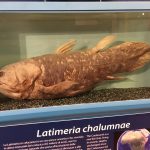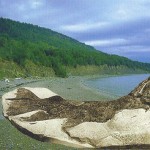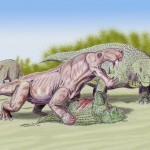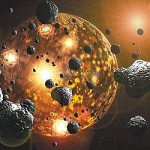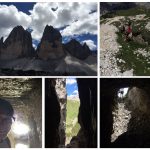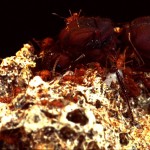Fossils, preserved remains or traces from ancient organisms, not only paint a picture of past life, they intrigue imaginations of all ages, make classic home decorations, and perhaps most notably, power society (petroleum is a chemical fossil). This post highlights the types of fossils, the stages of fossilization, the factors that increase the likelihood of an organism becoming a fossil, as well as the methods of preservation.
Types of Fossils
There are three types of fossils, but these can be preserved in a variety of ways; scroll down for a chart of preservation types.
- Body: any part of the organism's body, such as bones, teeth, skin, and hair; includes impressions of body parts
- Trace: something the organism made, such as footprints, nests, or feces (coprolites)
- Chemical: chemicals created by the organism, such as chlorophyll (plants), steranes (eukaryotes), crude oil (phytoplankton), or coal (plants)
Stages of Fossilization
Taphonomy, the study of fossilization, includes the following stages:
- Necrolysis: what happens after death, such as decomposition, until the remains are buried
- Biostratinomy: what happens after initial burial, including excavations and reburials; often involves disarticulation (breaking along joins), fragmenting (breaking), abrasion (smoothing), bioerosion, rounding (from transport), encrustation
- Diagenesis: what happens after final burial until discovery; often involves heating and flattening from high pressure conditions (from being buried), recrystallization, dissolution (e.g. from groundwater), chemical alteration
Factors Favoring Fossilization
Environmental Conditions
- Anoxic environment: low oxygen conditions repel scavengers while slowing the rate of bacterial decay
- No scavengers: scavengers scatter and destroy remains, stopping fossilization before it starts
- No bacteria: bacteria can completely decompose remains, leaving nothing behind to fossilize
- High deposition rate: this allows the organism to be buried before scavengers, bacteria, or the environment can take their toll, allowing the fossilization process to begin
Organism Features
- Hard skeleton: soft bodies decay rapidly (on the order of hours to days), leaving nothing behind
- Simple skeleton: complex, articulated skeletal parts tend to separate, making reconstruction difficult
- High population numbers: the more organisms of a species that exist, the greater the chances that one of them will be fossilized
- Benthic infaunal lifestyle: this means the organism lives in the sediment, so it's already buried
Preservation Types
Here is a good overview of fossil preservation types. I have created a chart of many of these types (not organized in any specific manner), featuring brief descriptions and picture examples. Click the images to enlarge them (the link in the description contains the photo credit/source).
| Original preservation | preserved as-is; example: a clam shell (shells found at the beach can be hundreds of years old!) | 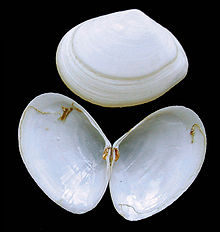 |
| Freezing | low enough temperatures nearly stop decay; example: 40,000 year old deep-frozen mammoth in the Siberian permafrost | 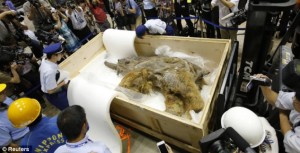 |
| Dessication | drying out; example: 10,000 year old mummified seals in the Antarctic, where few land predators exist to disturb the remains | 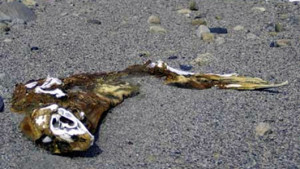 |
| Pickling | chemically preserved in oil; example: Messel pit fossils | 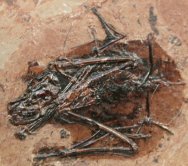 |
| Molds & casts | two very common fossil types, a mold is an impression of an organism--while a cast is a copy of the organism, often created by filling in a mold (read more); example: a mold (left) and cast (right) of a trilobite | 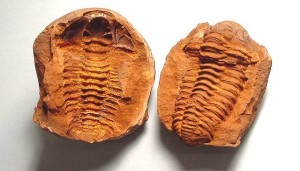 |
| Bioimmuration | organism covered by an encrusting calcifier like corals or bryozoans; example: impression of soft-bodied organism preserved in bryozoan fossil | 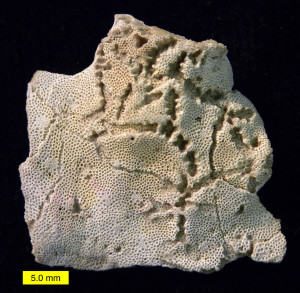 |
| Mineral coatings | bacteria decomposing the organism in anoxic environments produce a thin layer of iron sulfide around the organism; example: pyrite coatings on brittle star tube feet (hat tip to Professor Alex Glass) | 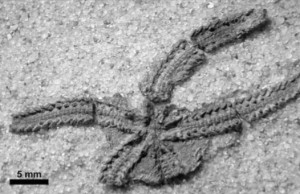 |
| Permineralization | spaces in porous tissue (such as bones or plant material) absorb groundwater during burial and precipitate groundwater ions into the pores ("turning tissue into rock from the inside out"); example: permineralized wood | 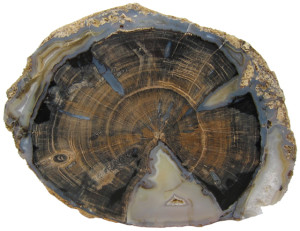 |
| Petrification | permineralization (minerals fill in pores) + replacement (one mineral replaces another); example: petrified dinosaur bone | 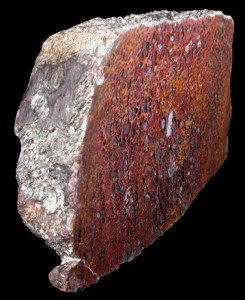 |
| Carbonization | thin film impression of carbon (a "smudge")--typically of plants, insects, or fish--created during heating, often preserving surface detail and original shape; example: see here | 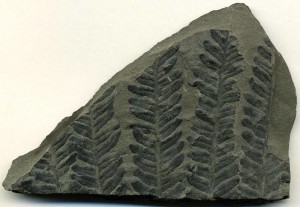 |
| Recrystallization | original minerals dissolve and immediately recrystallize in a different form, resulting in loss of detail; example: aragonite recrystallizing as calcite in a clam shell | 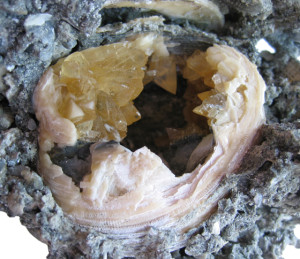 |
| Replacement | chemical alteration in which one mineral completely replaces another, typically while preserving detail; example: pyrite replacing calcium carbonate in an ammonite fossil | 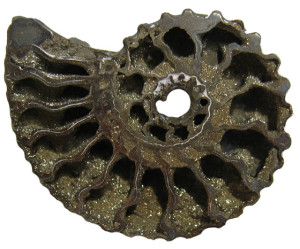 |

